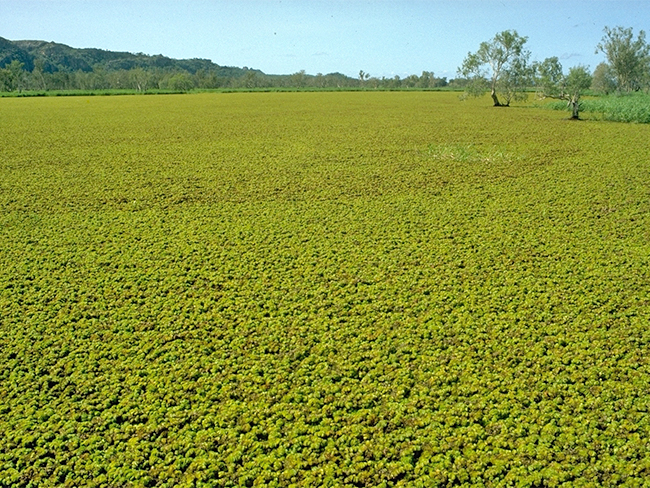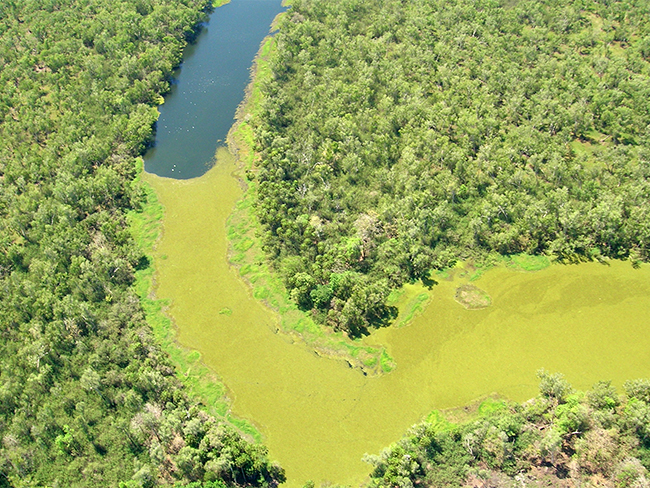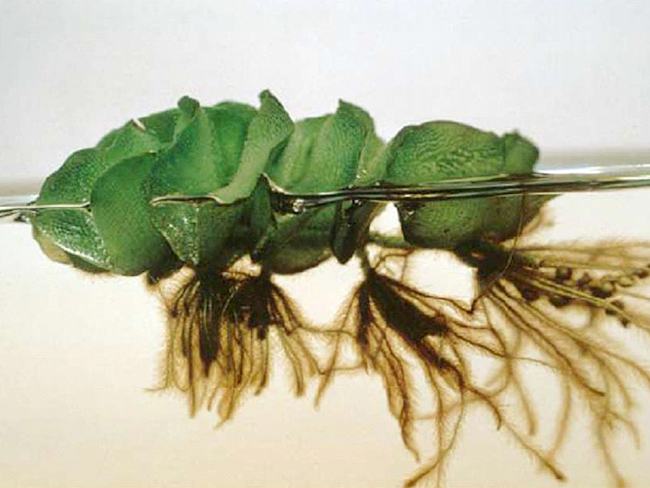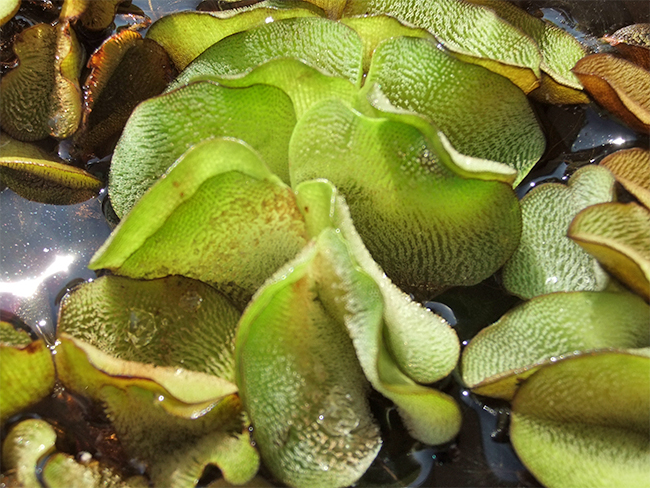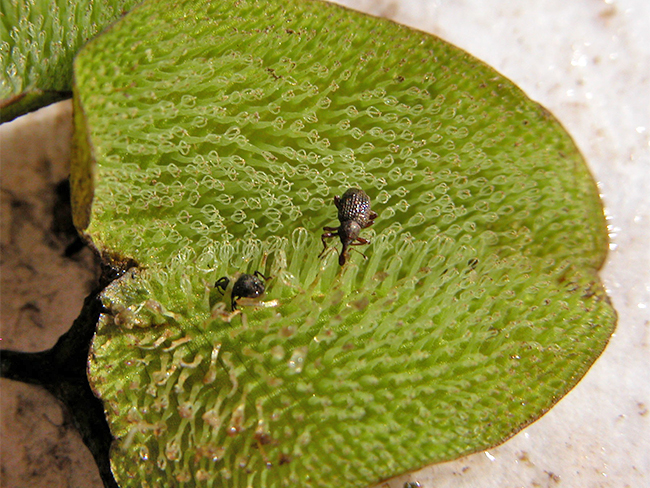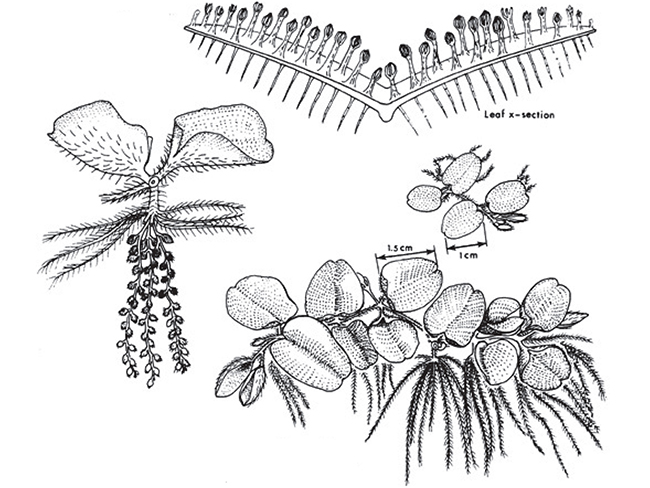Salvinia
Scientific name: Salvinia molesta
Declaration status: Class B
Salvinia is a Weed of National Significance. For more information, go to the Australian Government's Department of Environment website.
Salvinia is a native of southern Brazil and Paraguay.
It is thought to have been introduced to Australia by the aquarium trade and has been reported as a weed in New South Wales since 1952.
It has been widely planted as an ornamental and has been grown in garden ponds in many places in Australia, including Alice Springs.
It is now found in the Northern Territory, Western Australia, New South Wales, South Australia and Queensland.
It has the potential to grow in water bodies in every Australian state and territory.
This weed is usually found in still or slow-moving water with high nutrient levels and can survive water temperatures up to 43 degrees and salinities up to one tenth that of sea water.
Impact
Salvinia creates a mat on the surface of the water that blocks out the light and alters the environment for animals and other plants.
Salvinia can have all of the following impacts:
- blocks light and reduces oxygen levels
- causes stagnation and pollution
- restricts water flow
- blocks access to water by animals
- creates favourable breeding conditions for mosquitoes.
Identification
You should use this as a guide. There may be other plants or weeds that look similar.
- free-floating perennial aquatic fern which forms mats over water surfaces
- each individual plants range from 5cm to 30cm in length
- many branched horizontal stems 0.2cm in diameter that float just below the water surface
- pair of floating, green, oval- shaped ‘leaves’ (fronds) at each node or joint and are covered in waxy stiff hairs that are shaped like egg beaters
- fruiting bodies containing sterile spores hang from the divided leaf.
To find out more, get the salvinia weed note on the Department of Environment, Parks and Water Security website.
If you are unsure, contact the Weed Management Branch.
Control
Small infestations in home ponds and aquaria can be gathered with fine-woven scoops, placed in plastic bags and destroyed by leaving the bags in the sun to dry out.
Salvinia can be sprayed with various herbicides however results can be variable as upper leaf surfaces are largely non-wettable, making absorption of herbicides difficult.
Large infestations are sometimes gathered with mechanical harvesters and scoops, although the effectiveness of this method is limited by the ease with which the plants break into fragments.
Plants that are removed from the water should be taken away from the water’s edge, and preferably burnt, to prevent reintroduction.
Biocontrol
Biological control of salvinia, through the weevil cyrtobagous, has been very successful, and only small amounts of herbicide are now required to manage the weed.
Find out more about biological control.
Spread
Salvinia is spread by vegitative reproduction. Its stem fragments are distributed by water movement, and the dumping of unwanted pond and aquarium contents is a major cause of spread.
Spread prevention
You can prevent the spread of salvinia by doing all of the following:
- map infestations to help develop a management plan
- control minor infestations or isolated outbreaks first
- designate wash down areas and actively work to prevent contamination of clean areas
- remove salvinia from fish ponds, fish tanks or farm dams
- clean fishing nets, boats and boat trailers that come into contact with salvinia
- avoid boating in areas infested with salvinia
- monitor areas that you have treated and watch for re-infestations.
Give feedback about this page.
Share this page:
URL copied!
